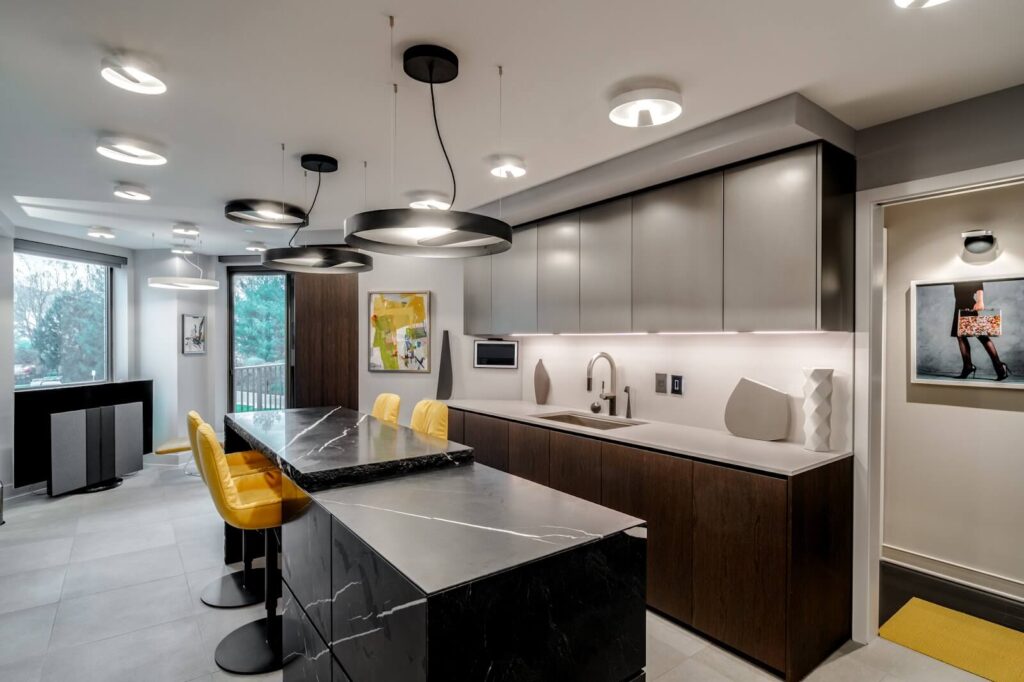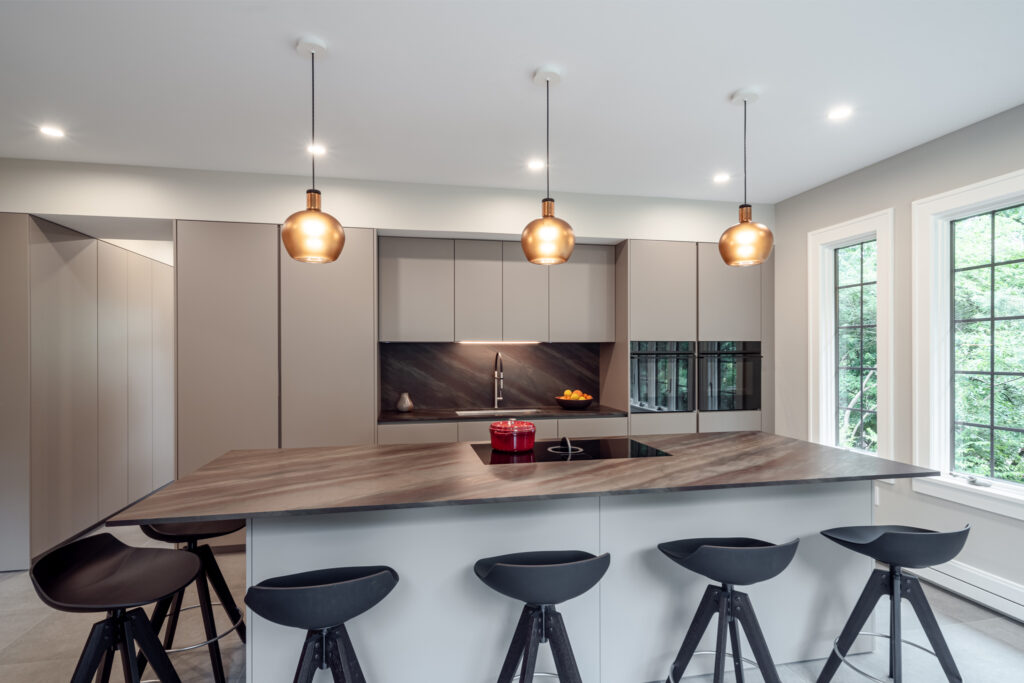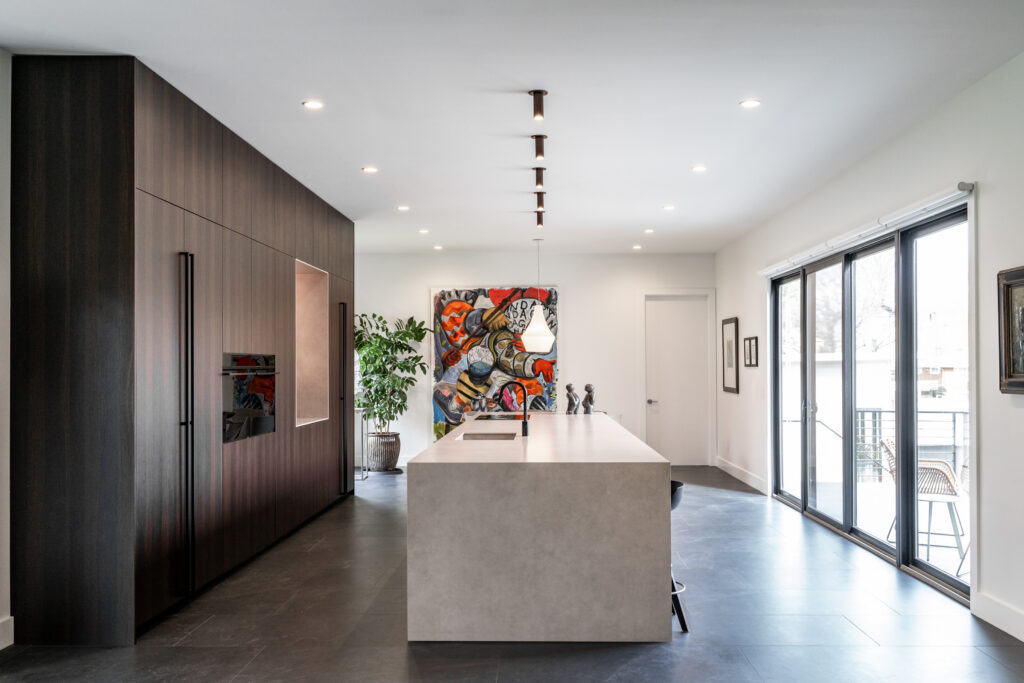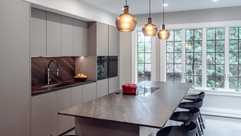Interested in creating an award-winning kitchen that capitalizes on the hottest kitchen trends in 2025? You’re not alone. According to Google, these two topics represent the most common kitchen-related searches this year.
But what makes an award-winning kitchen? The answers may surprise you.
“A best-of-show kitchen is more than simply fantastic materials and exceptional appliances,” explains Agostino Fede, owner of NOLI. “It is a design that creates a uniquely beautiful space that flows toward light—whether it inspires movement from one interior space to another, or from the interior to the exterior of the home.” To accomplish this seamless experience, consider the following steps to design your own award-winning kitchen.
Ask the Important Questions
The first step to designing your award-winning kitchen is to get clear on what an “award-winning” kitchen means to you. Are we talking about actual accolades, or is your award going to be the peace and comfort you feel cooking in your new space? Or maybe it’s the joy of hosting guests around your new kitchen island? (Hint: we definitely prefer the metaphorical award-winning kitchen design to the literal one 😉) Once you find out what “award” you’re actually looking for, designing a kitchen that meets those needs becomes easy.
Not sure how to figure that out? Try asking yourself these questions:
- What is beautiful to you? Is it a seamless workflow bolstered by a clean, sleek environment? Or maybe it’s the feeling of calm you get when you enter a space that prioritizes ambiance and calm? There’s no right answer other than what works for you.
- What makes you happy? When you picture yourself standing in your new kitchen, what images bring a smile to your face? Is it a kitchen island with lots of seating so you can be surrounded by family and friends? Or is it a treasure trove of sleek, hidden appliances that make your job as chef easier? Once again, the only “right” answer is the one that makes you smile.
- What are your goals with your kitchen? Modern design is all about the balance of function and beauty. You know what you want in terms of beauty, but what about function? How is your kitchen going to be used? What types of meals are you most likely to prepare there? Will it double as a hosting space? All of these questions can help guide your design.
Create a Personalized Design Tailored to Your Lifestyle
When embarking on an award-winning kitchen redesign, it’s essential to prioritize a design that caters to your family’s specific needs. Collaborating closely with a skilled designer will ensure that the space truly works for you. Take the time to consider your family dynamics. How often do you entertain? Will the kitchen be a hub for social gatherings? Understanding the number of people your kitchen should comfortably seat and the frequency of multiple cooks in the house will contribute to a harmonious and functional kitchen that brings joy and rejuvenation to your home for years to come.
Your lifestyle will also be crucial to determining the materials you use to design your Cincinnati metro kitchen. In general, modern design favors the monolithic and monomateric. That means you’re going to want to focus in on durable, natural materials that can hold up against whatever it is your kitchen is going to be used for and will look beautiful in conjunction with the rest of your home’s design.

In this example, the Minotticucine Terra 2.0 Isola is the focal point of the kitchen. Made with ultra-durable quartzite, the island’s minimalist design is not only beautiful, but functional as an easy-to-clean workspace that perfectly balances art and utility. The intensity of the quartzite is then offset by smoked oak cabinetry, and the client was even able to add a pop of color by incorporating yellow, counter-height chairs for their guests. This strategic accent adds personality to the space without sacrificing functionality or taking away from the design, which is why we always tell clients to accent strategically and with intent to achieve beautiful results.
Illuminate with Purpose
Lighting can make or break a kitchen. It’s so critical, it should be the first consideration, prior to structural design, materials, or appliances. It’s not as simple as ensuring the space is bright, either. While targeted task lighting is a must for the detailed work of food preparation, you also need softer, ambient lighting for your guests to toast you at the end of a perfect meal. During the day, natural lighting should flood the space—while at night, your lighting options should feel warm and approachable.
Just as we discussed accenting your design with intent, you’re going to want to light with intention as well. In modern design, you’re going to want to make sure all of your lighting is integrated seamlessly into the design of your kitchen, with no visible hardware or fixtures unless you’re using them to enhance the design, like with the pendant lights we installed for a client here:

In general, the lighting in your kitchen will fall into three categories:
- General lighting: The lights you need to actually illuminate your space. These lights will ideally be hidden and integrated into your kitchen design.
- Mood lighting: Like the pendants in the above example, mood lighting helps set the aesthetic tone for your space and give it the “wow” factor. These lights will generally be the ones that are actually seen by your guests, so should fit in with the style, color palette, and materials already being used in your kitchen.
- Task lighting: These lights are specific, integrated lighting fixtures designed to help provide a little more luminosity to specific areas. This could mean directional lights on top of your kitchen island, cabinet lighting, or lights around the area where you’ll be preparing food. These lights would also be hidden from view for a more seamless design.
Upgrade to Integrated Appliances
Take your kitchen to the next level with intuitive appliances that offer both ease of use and exceptional performance. Seek appliances that can be understood at a glance, making meal preparation a breeze. During the design process, communicate your cooking and baking preferences to your design partner. By considering the full spectrum of your entertaining needs, from everyday meals to special events, you can select appliances that effortlessly cater to your culinary endeavors. The result? A seamless and enjoyable cooking experience that elevates your creations and leaves a lasting impression on your guests.
Once you know what appliances you’ll be needing in your soon-to-be-award-winning kitchen design, it’s time to hide them. Integration is the name of the game when it comes to modern design, so unless it’s an appliance you want to show off like a beautiful new oven or stylish coffee maker, we’re going to want to hide it.
How? Cabinets, cabinets, cabinets!

Take this NOLI client in Covington, Kentucky, for example. In this modern kitchen everything is integrated into cutting-edge cabinetry to create a clean, sleek space free of visual noise. Here, form and function exist in perfect balance, reflecting the client’s values of aesthetic beauty and practical living all in one gorgeous space.
Think there’s an appliance you can’t hide? Think again. Kitchen hoods can be hidden or flush-mounted. Ovens (when not in use 🙂 can be hidden behind pocket doors. Refrigerators and dishwashers can be paneled to look like cabinets. The goal here is to make your appliances disappear until they are in use, while still leaving space for you to show off the ones you’re most proud of with intentional design.
Embrace Revolutionary Smart Home Integration
In today’s digital age, an award-winning kitchen should also take full advantage of the wonders of smart home technology. Imagine a kitchen where appliances, lighting, and even the climate can be effortlessly controlled with a simple voice command or a tap on your smartphone. From preheating your oven remotely to adjusting the lighting for a cozy dinner party, integrating smart home features into your award-winning kitchen design provides unparalleled convenience and elevates the overall experience.
But a word of warning — don’t get so obsessed with updating your “smart” home that it makes you feel stupid. Don’t choose smart appliances just for the sake of having the most high-tech gadgets available. Instead, be intentional with your appliance choices and pick things that you understand how to use and will genuinely make your life easier. If an appliance is so technologically advanced that it’s a pain for you to use or maintain, it’s not doing anything for you.
In short, that high-tech espresso machine with 25 different settings may sound cool, but if you can’t figure out how to actually use it to make a latte, what’s the point?
Choose spacious countertops, shelving and cabinetry using natural materials
An award-winning kitchen should delight the eye and calm the mind—a state that’s only possible if there is adequate hidden shelving to allow for open, uncluttered space. In addition, richly textured or sleekly elegant natural finishes can provide the perfect touch to your cabinetry. And don’t forget the kitchen island! Now a staple in most well-designed kitchens, your island should provide smart solutions to meet your specific needs, from built-in storage and appliances to extended countertops for dining and conversation.
Embrace Nature: Connect the Kitchen to the Outdoors
Whether you are taking advantage of an extraordinary view, seeking to link the kitchen to an exterior living or dining space or simply wish to maximize the amount of natural light in your Cincinnati kitchen, finding a way to connect to the outdoors is critical. Large, uncluttered windows, skylights or making the decision to open the flow of your kitchen space to other areas of the house are all options that bring you closer to the outdoors.
One great way to do this is to embrace the principles of biophilic design, where nature is brought indoors by incorporating organic textures, natural light, and living systems into your space. Biophilic interior design doesn’t just beautify your home, it enhances how you experience it. Exposure to natural elements has been linked to reduced stress, improved focus, and even faster healing. This is more than just adding a potted plant here and there. In the modern organic home, these elements become part of the structure itself, turning living spaces into sensory-rich environments that support sustainable living and reduce visual noise.
Looking for more ideas? NOLI has a private Cincinnati showroom where we bring the latest in kitchen and architectural interiors to life right before your eyes. For a private appointment to discuss your next redesign project, contact NOLI today.


